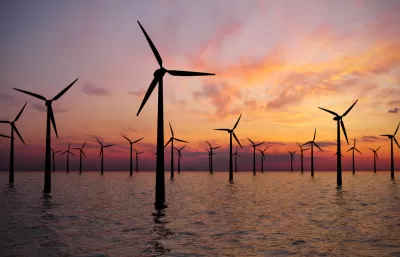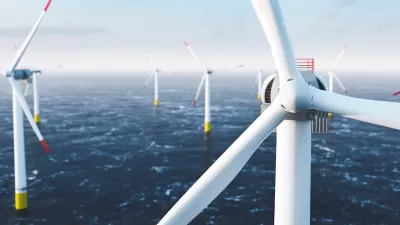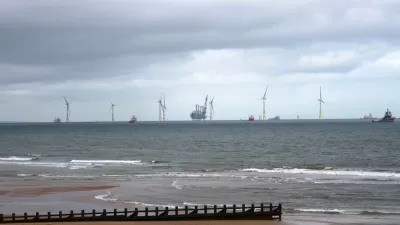States traditionally resistant to renewable energy are passing legislation to ease the way for offshore wind production as lawmakers realize the potential economic benefits to their states.

“The offshore wind industry, which produces little electricity today, is poised to grow exponentially in the coming years as long-awaited projects come online, and more waters are opened for leasing,” writes Alex Brown in Governing. While some states mandate certain amounts of offshore wind energy, Schulman writes, others have been reluctant to do so. Now, with the economic benefits of offshore wind becoming more apparent, some state legislators are hoping their states can cash in.
On the East Coast, “Eight states set goals or mandates that total 39 gigawatts of capacity by 2040. Many have invested in ports, workforce development, transmission infrastructure and manufacturing sectors.”
The article outlines recently passed or proposed laws that support offshore wind production, such as a Massachusetts bill that would establish an investment fund and a Maryland law that streamlines the process for renewable energy credits. On the West Coast, “Federal officials are expected to hold the first offshore wind lease sale in California waters this fall, and state regulators there have twice voted to allow the lease phase of projects to move forward.”
Even in the South, where energy interests have largely suppressed the development of renewable energy infrastructure, lawmakers hope to reverse that trend. “Louisiana legislators, for example, passed a law this year to allow for leasing of state waters in the Gulf of Mexico for offshore wind projects.”
FULL STORY: More States Back Offshore Wind, Citing Economic Potential

Alabama: Trump Terminates Settlements for Black Communities Harmed By Raw Sewage
Trump deemed the landmark civil rights agreement “illegal DEI and environmental justice policy.”

Study: Maui’s Plan to Convert Vacation Rentals to Long-Term Housing Could Cause Nearly $1 Billion Economic Loss
The plan would reduce visitor accommodation by 25% resulting in 1,900 jobs lost.

Why Should We Subsidize Public Transportation?
Many public transit agencies face financial stress due to rising costs, declining fare revenue, and declining subsidies. Transit advocates must provide a strong business case for increasing public transit funding.

Paris Bike Boom Leads to Steep Drop in Air Pollution
The French city’s air quality has improved dramatically in the past 20 years, coinciding with a growth in cycling.

Why Housing Costs More to Build in California Than in Texas
Hard costs like labor and materials combined with ‘soft’ costs such as permitting make building in the San Francisco Bay Area almost three times as costly as in Texas cities.

San Diego County Sees a Rise in Urban Coyotes
San Diego County experiences a rise in urban coyotes, as sightings become prevalent throughout its urban neighbourhoods and surrounding areas.
Urban Design for Planners 1: Software Tools
This six-course series explores essential urban design concepts using open source software and equips planners with the tools they need to participate fully in the urban design process.
Planning for Universal Design
Learn the tools for implementing Universal Design in planning regulations.
Smith Gee Studio
Alamo Area Metropolitan Planning Organization
City of Santa Clarita
Institute for Housing and Urban Development Studies (IHS)
City of Grandview
Harvard GSD Executive Education
Toledo-Lucas County Plan Commissions
Salt Lake City
NYU Wagner Graduate School of Public Service





























